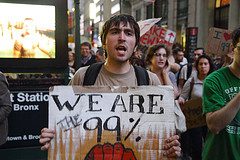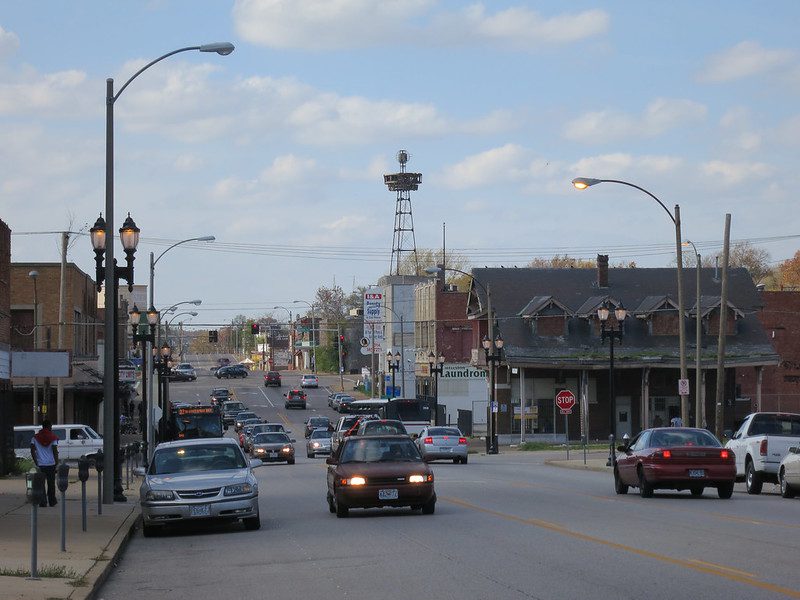I find the occupation of Wall Street terribly exciting.
But of course, this is not the first protest of this sort in response to the current mess. Nor are these the first arrests. Community organizing groups that in general reach a different slice of the 99% have been fighting unjust foreclosures, shutting down bank branches, and storming bank shareholders meetings for a few years now; their works has been building and this fall, right now, they too are stepping it up and taking to the streets with weeks of action that coincidence with the rise of the Occupy movements.
We’ll be devoting a package of articles to several of these organizations, and the coalition, the New Bottom Line, that they are forming, in the upcoming issue of Shelterforce.
New Bottom Line has a focused set of demands. The Occupiers have, with some effort and sacrifice gotten national media attention and forced the conversation away from ultra right vs hard right.
They need to come together…
I wrote in Shelterforce 2000 that community developers should lend their support the fight against corporate globalization. This round of direct action is much more domestically focused—it should prove easier to connect to it. I wrote in my local paper here in Albany, NY, last week that “the “occupiers” should seek out and support the bank accountability organizing”:https://metroland.net/2011/09/28/main-street-vs-wall-street/. Although they have not yet been connected much in the media yet, the common cause is obvious—they are two sides of the same coin.
I have been heartened by descriptions of a fairly diverse group of people coming together for the occupation actions, from students to firefighters to former bankers, but I think the community organizing networks, drawing from congregations, unions, and other networks that reach deep into communities of color and working class and poor communities, reach a different demographic mix, age, class, and race wise.
Imagine, everyone form the fed-up working-class and poor congregation members of color who never identified as activists to the disillusioned just graduated once were destined for the middle class now unemployed. The power could be amazing.
When the occupiers go home, they should keep the bigger conversation they’ve been having going, but they should also bring their experience and talent and energy to join these other actions—turning the minions of Wall Street away from their neighbors’ front porches and getting their hands dirty in the work of bringing about specific change.
As for the community organizers, community developers, housing counselors, and others who have been on the front lines working with the most vulnerable populations, I think they would do well to set aside cynicism and cultural divides and embrace the energy, global analysis, and commitment to democracy of the swelling ranks of the Occupiers—help connect them to local efforts. Help them support concrete demands. Help those who need it to understand realities other than their own.
Together these two movements can really represent the 99 percent.
(Photo by Flickr user PaulS, CC BY-SA)





Comments